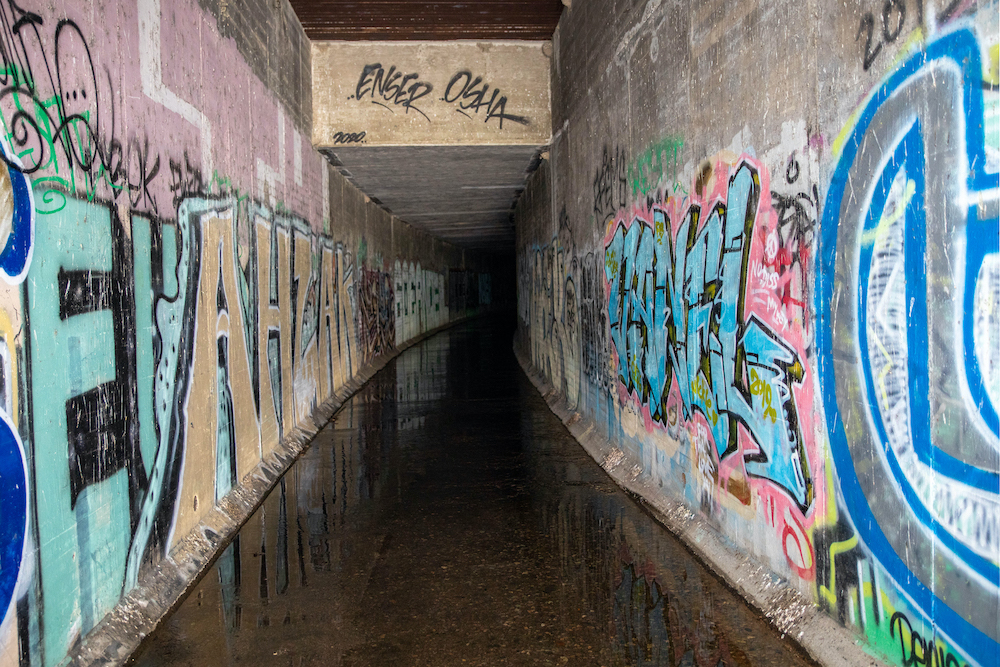In the 1970s, The East Los Streetscapers promoted the idea that graffiti muralism was part of the struggle to claim urban space. This concept was shared by the Los Angeles Fine Art Squad, a group of artists also taking art to the street using murals. This activist approach was always part of street art, but it wasn’t until Wild Style hit the left coast in the ‘80s that graffiti became Art; mostly because the result was large-scale graf burner throw ups in every neighborhood across LA.
Since then, many young contemporary muralists are introduced to their craft through street art and graffiti but seem to be artistically inspired by lowbrow imagery and/or the flowing cursives of “calligraffiti.” One of these artists is Tristan Eaton, described by writer Carlo McCormick as “the heir apparent of a delinquent cultural lineage that involves a variety of media… including graffiti.” Recently commissioned by the Aster Members Club to produce a pair of four-story tall murals for its Hollywood and Vine location, Eaton anticipated that his Street Art piece “saluting Tinseltown groundbreakers” would be seen by thousands of people every day. Consequently, he made it teem with cultural, racial, and political references, providing a sort of non-factual education of data without context for a public mostly ignorant of Hollywood’s backstory. Still, although Eaton believes the mural successfully shares his story “of the Hollywood he knows and loves,” the worth of Eaton’s piece relies on it being seen by the throngs promenading Hollywood Boulevard, whether they get what he’s putting down or not.
This is the fundamental tenet of graffiti: to spread a message or image by bombing any available surface, using everything from tags and murals to pens, stickers, and stencils. The endgame is a dispatch from a writer or crew to as many members of the public as possible. But beneath the streets of Los Angeles, graffiti exists rejecting this usual arrangement and interested individuals must go to extreme efforts to view the work. The Los Angeles River is joined by many “tributaries” of drainage channels and some of these tunnels have been hit so thoroughly that layered full-color pieces can be seen as far back as sunlight can penetrate the shaft. But the large and elaborate burner pieces don’t stop there, they continue into the darkness, seemingly without end, the “date stamps” and placas reaching further into the past. This is graf that shares none of the ambitions held by Eaton or the muralist liberators of the streets. According to the graf-legend Mear One, “True Graffiti artists enjoy the aspect of going places others wouldn’t. So, I guess we’re looking for that legacy location, a spot time forgot; maybe a place that can survive the next ice age and be discovered by future generations.” He pauses, then adds, “Plus, we can smoke weed with no hassles from the streets or the cops.”


